What are the different types of personalized marketing? Why are they important? How can they be used to boost the ROI of small businesses?
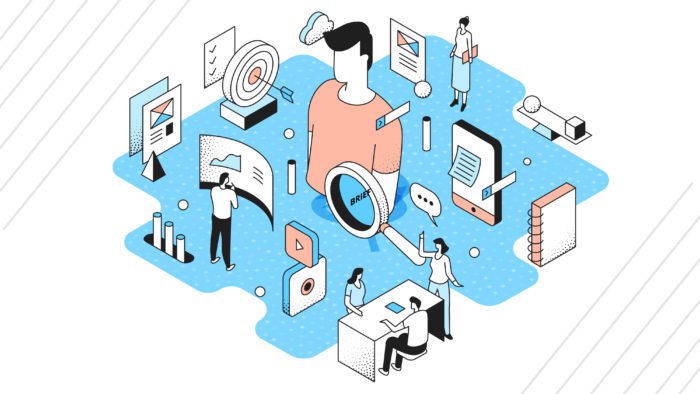
These questions are at the root of every successful marketing personalization campaign. However, marketers and small-business owners often begin these campaigns without carefully considering their goals, methods, and the scope of personalization they have the capacity for.
As a result, marketers who start using a personalization channel without the proper goals or direction cannot gauge if it’s meeting their expectations. This can also lead to poor data collection and an inability to adapt, among other things.
So, what are the different types of personalized marketing, and how can they be implemented successfully into your campaigns? Moreover, what is personalized marketing, and how does it differ from generic marketing?
We’ll start with the latter question first.
What Is Personalized Marketing?
Personalized marketing appeals to individuals based on their tastes, demographics, and other relevant information. It is delivered as directly as possible to individuals within the target audience through various means like email, targeted ads, and more.
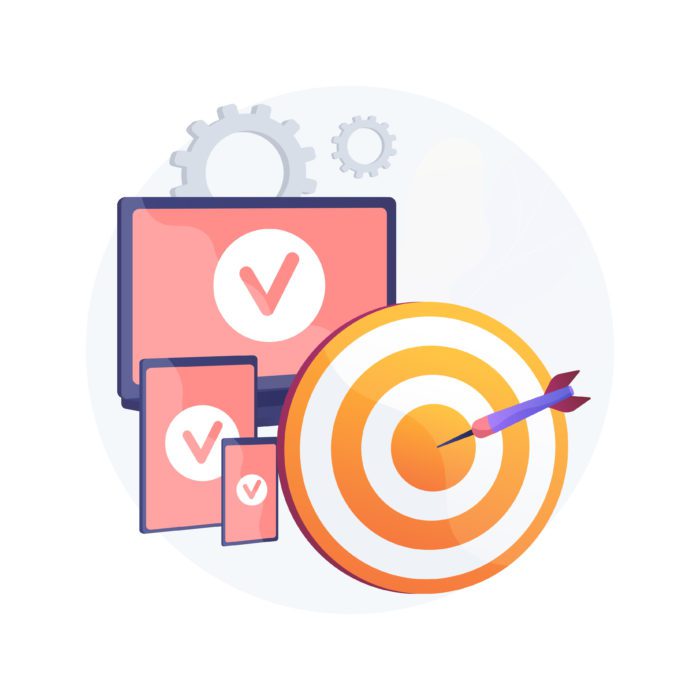
Generic marketing, however, seeks to appeal to as broad an audience as possible (think billboards, newspaper ads, generic commercials, etc.). While these ads may be strategically placed, they still are not delivered directly to the target audience based on their relevant interests.
The advantage of personalized marketing over generic is that the resources used in a personalized campaign go directly toward marketing to a relevant audience. This allows you to tailor your messaging to your individual or segment, not to a generic audience. It also increases the likelihood that the people you market to will be interested in what you’re selling.
So, what are the different types of personalized marketing, and how can you use them within your business?
Push vs. Pull
There are two types of personalized marketing: push and pull.
With push-based marketing personalization, content and ads are sent out to groups based on data the company has collected.
For example, maybe you want to send out an email newsletter to your segmented list. Your prospects will get a special offer for a campaign package, and your clients will get a survey. Since you base your marketing messaging on their placement in the sales funnel, you are “pushing” your message to them.
The idea behind push marketing is that you can plan your content distribution around relevant information you have collected from your audience. However, one of the dilemmas with push marketing is that it does not take into account an individual’s motivation to buy.
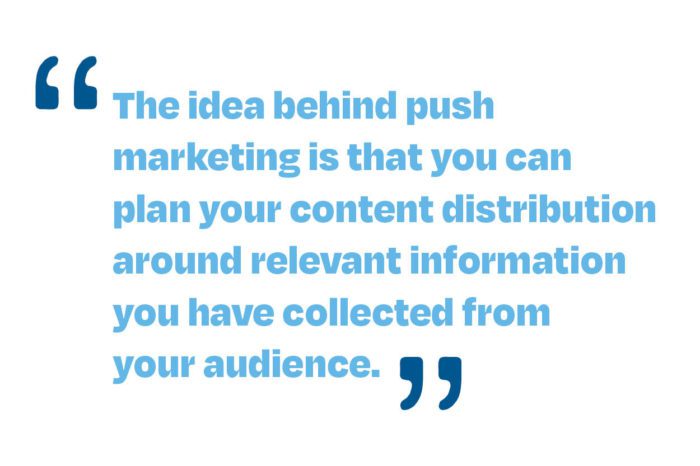
Pull marketing, though, is about letting the right customers come to you based on their interest in buying from you.
The most straightforward example of pull marketing is search ads. Customers are provided with various ads and results based on their search queries. This, in turn, helps to ensure that people interested in and willing to buy your products click on your ad.
However, pull marketing isn’t possible if you set up a comprehensive content and relationship marketing campaign, which is critical to boosting customer retention. That’s why using a combination of both push and pull marketing tactics is the best way to personalize.
Within the push and pull categories, other types of personalized marketing are important to consider, including explicit, implicit, and adaptive personalization.
Explicit Personalization
Suppose you subscribe to an email newsletter for recipes. When you create your account, they ask you to personalize your experience by sharing your food allergies, restrictions, and preferences. They then customize what recipes you receive based on the data you intentionally gave them.
That’s explicit personalization.
The nice thing about explicit personalization is that the user controls their experience. However, since this form of marketing relies on the user providing the necessary information, the level of personalization is only surface-level. It cannot draw information from the user’s behavior to provide more relevant ads and recommendations.
Implicit Personalization
Your history and behavior are tracked while browsing on a search engine like Google. That allows Google to give you personalized ads to match topics you have investigated through the site. Sometimes, websites will even track your usage on other platforms to get a complete picture of your interest profile.
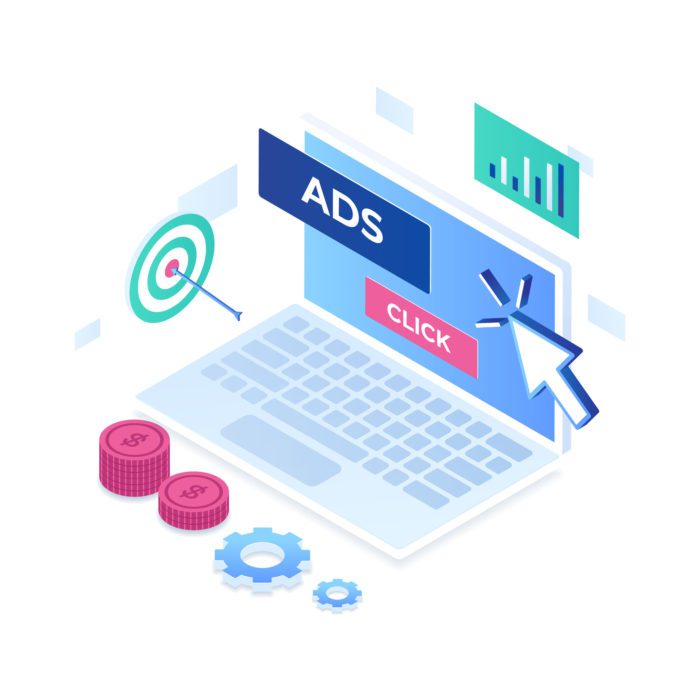
This is implicit personalization.
While it’s more tailored than explicit personalization, implicit personalization raises ethical questions about privacy and consumer rights. When these issues are handled poorly, businesses can do more harm to their brand than good.
Adaptive Personalization
If you have a YouTube profile, your recommended videos change over time as you investigate certain topics. For example, even though you may have started out watching cat videos, your suggested videos shift when you watch marine biology videos.
That’s adaptive personalization.
This type of personalization allows businesses to learn over time and shift their offerings to provide individuals with the most relevant information possible. However, it also creates the same privacy concerns as implicit personalization.
But what do each of these personalizations mean in practical terms for small businesses?
Typically, small and mid-size businesses don’t have the resources to invest in complex algorithms to manage implicit or adaptive marketing campaigns. Most of their content will have to be personalized using explicit personalization.
Two forms of explicit personalization typically work best for smaller businesses: segmented and individualized. But what’s the difference between the two types of personalized marketing, and how are they used?
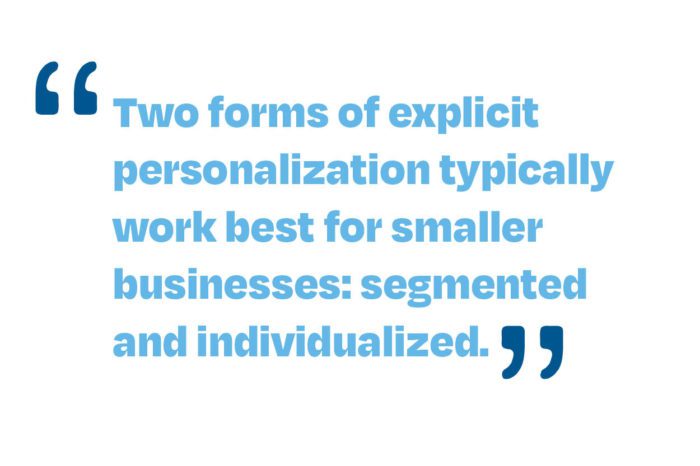
Segmented vs. Individualized
Segmentation focuses on categories of users, while individualized marketing focuses on individual users.
Let’s say you want to mail out a thank-you card to everyone who came to your business’s networking event and a postcard to everyone who didn’t. You will need to segment your list into two categories: those who attended the event and those who didn’t.
While you ensure your materials are personalized because they take relevant factors into account, this is still marketing to people based on categories, a form of segmented marketing, not individualized marketing.
Individualized marketing would apply if you wrote specific, detailed thank-you notes to your event guests and sent everyone else on your list a postcard made just for them.
As you can imagine, most smaller businesses also don’t have the bandwidth to individualize their marketing. However, segmentation can work very well for businesses if they do their due diligence to collect relevant data and maintain their list’s hygiene.
Personalization Channels
So, what marketing channels can smaller businesses use, and to what extent can they be personalized?
Email And Direct Mail
Marketing emails are an easy, inexpensive, and effective way to get your marketing message out to your customers. Email is an especially effective channel for long-term content marketing and nurturing campaigns.
Like email, direct mail is a great way to deliver your message directly to the people in your audience. However, direct mail has unique benefits that differentiate it from email marketing. Marketers should consider taking a dual approach to yield the best results possible.
When using these channels to create personalized campaigns, segmentation and individual targeting can both be used. Content and offers can be delivered to specific groups when a mailing list is segmented correctly. However, trigger campaigns can also be set up to automatically send unique mailings to individuals when they reach a relevant milestone or their demographics change. It all depends on the goals of the campaign.
Individualized Ads And Recommendations
Search ads, display ads, and video ads through Google all take an individual’s personal preferences into account. This is one of the few easy ways small businesses can market to the individual without investing in their databases. Instead, they can rely on the information collected by Google and its algorithm to ensure their message gets to the right customer at the right time, every time.
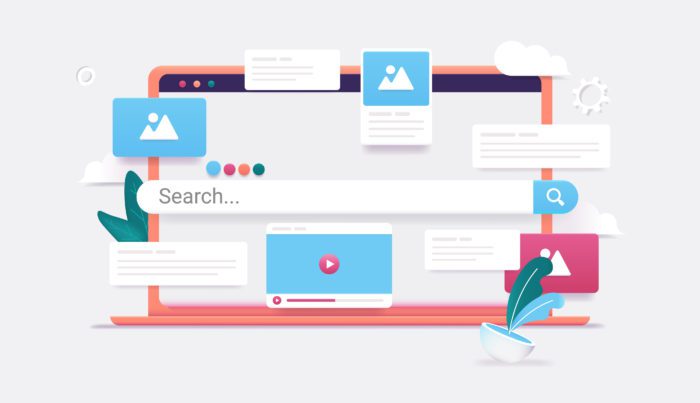
The best part? Google ads can be set to function on a “pay-per-click” basis. That means you won’t have to pay for your ad unless someone clicks on it, and you only pay in proportion to the number of times it is clicked.
However, one flaw of this marketing is that it is typically only surface-level. It’s usually designed to pitch a good or service to users ready to buy, but it does not provide a good platform for long-term content marketing, lead nurturing, or relationship building.
That’s why it’s essential to integrate multiple types of personalized marketing into your strategy. Some styles will be more effective for potential customers based on where they are in the buying process.
Speaking of the buying process, what about personalization in the context of sales?
Sales
Personalization will be a critical part of your sales process if you’re in an industry where deals are made face-to-face. Your sales team will need to be well-versed in tailoring their approach to accommodate each prospect’s tastes, personality, and needs.
One of the best ways to do this is by training your sales team to use a potential customer’s DISC personality assessment (a profile measuring four traits: Dominance, Influence, Steadiness, and Conscientiousness) to personalize their approach. Each personality style finds different tactics compelling. That’s why making the appropriate adjustments to your sales process is crucial if you want to see heightened success rates.
Other than that, personalizing sales experiences generally comes naturally. As a salesperson gets to know a prospect, they generally tweak their pitch to reflect what resonates with the potential buyer.
However, that won’t be possible if your team only focuses on closing sales. That’s why your sales team should get accustomed to listening to leads and using sales as a means by which to provide them with solutions. When prospects feel listened to, they are likelier to trust the salesperson.
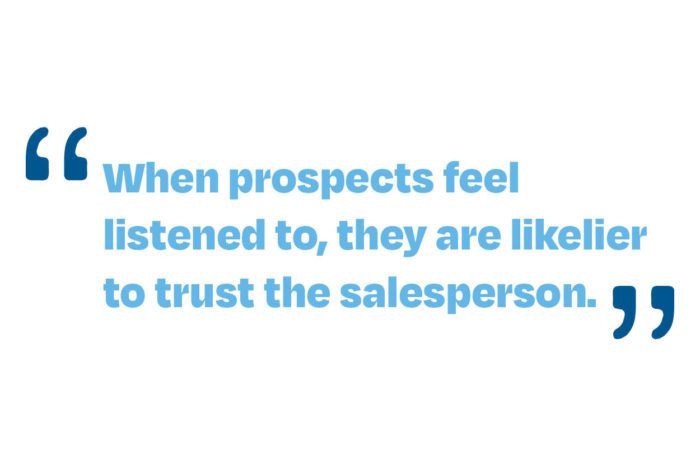
This selling style also creates an opportunity to connect with leads personally. When your sales team isn’t overly focused on selling, they will have the time to ask questions that can help to form a long-term relationship.
By evaluating what types of personalized marketing would work for your business and planning accordingly, you can see the full benefits of tailoring your marketing. Over time, a tailored strategy will result in higher ROI, more long-lasting relationships, and better overall outcomes for your nurture campaigns.
Want to learn more about implementing a personalized content marketing strategy within your business? Fill out the form below to download your free copy of our Content Marketing Guide.


Recent Comments